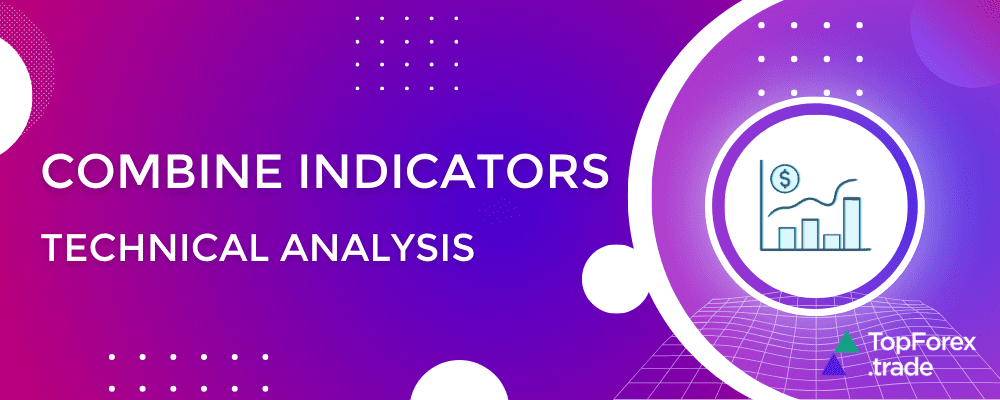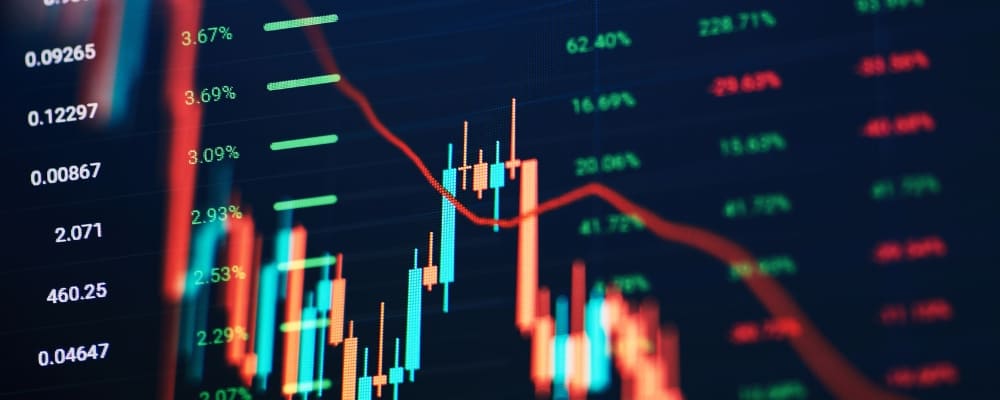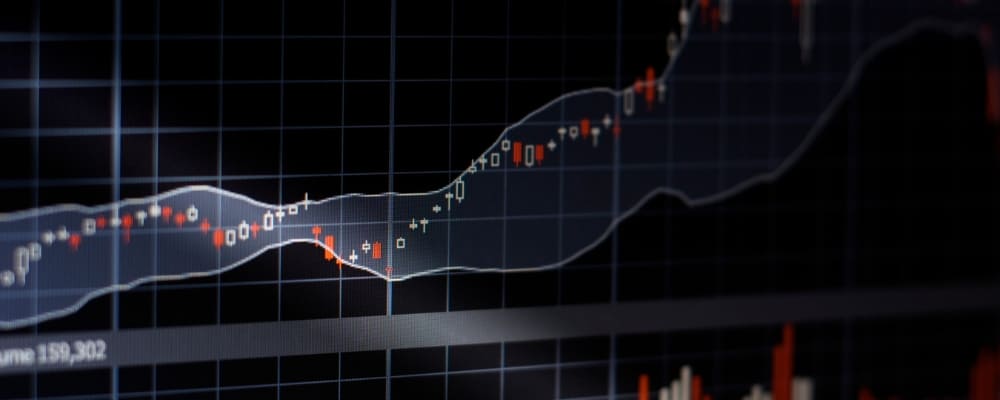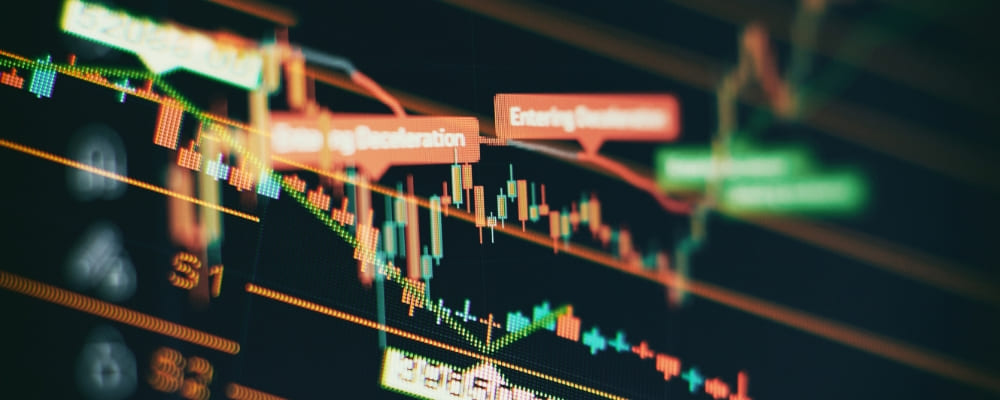How to combine trading indicators in Technical analysis

Technical indicators used in analysis are mathematical calculations based on historical price, volume, or open interest data. Traders use these indicators to interpret market behavior and forecast future price movements. Technical indicators provide insights into market conditions by analyzing patterns and trends within this data, helping traders make informed decisions. These tools are essential for identifying entry and exit points, assessing market strength, and managing risk.
Trend-following indicators help traders identify the direction and strength of a market trend. They are particularly useful in trending markets, where the goal is to enter in the direction of the trend and stay with it as long as possible.
- Moving Averages (MA): Averages the price data over a specific period to smooth out short-term fluctuations, highlighting the overall direction of the trend.
- Moving Average Convergence Divergence (MACD): Combines moving averages to indicate changes in the strength, direction, momentum, and duration of a trend.
Momentum indicators measure the speed and magnitude of price movements. They help traders assess the strength of a trend and identify potential reversals or corrections.
- Relative Strength Index (RSI): Compares the magnitude of recent gains to recent losses to identify overbought or oversold conditions.
- Stochastic Oscillator: Compares a security’s closing price to its price range over a specific period, highlighting possible trend reversals.
Volume indicators analyze the number of shares or contracts traded in a security to determine the strength of a price movement. High volume during a price increase suggests strong market interest, while low volume can indicate a potential reversal.
- On-Balance Volume (OBV): Tracks cumulative buying and selling pressure by adding volume on up days and subtracting it on down days.
- Volume Oscillator: Measures the difference between two moving averages of volume, helping traders identify trends in trading activity.
Volatility indicators assess the degree of variation in a security’s price over time. They are crucial for identifying periods of high or low market activity, which can signal potential breakouts or reversals.
- Bollinger Bands: Uses a moving average and standard deviations to create bands that indicate high and low volatility levels.
- Average True Range (ATR): Measures market volatility by calculating the average range between high and low prices over a specific period.
Each type of indicator plays a distinct role in market analysis:
Trend-following indicators help traders align with the market direction, ensuring that trades are made in harmony with the broader trend.
Momentum indicators provide insight into the strength of a trend, helping traders decide whether to enter or exit a position.
Volume indicators validate price movements by confirming whether a trend is supported by strong trading activity.
Volatility indicators warn traders of potential price breakouts or reversals by highlighting increased or decreased market activity periods.
By combining these indicators, traders can develop a more comprehensive view of the market, reducing the risk of false signals and improving the accuracy of their trading decisions.
Why combine trading indicators?
Eliminating false signals
One of the primary reasons for combining trading indicators is to reduce the likelihood of acting on false signals. Individual indicators can sometimes generate misleading signals, especially in volatile or choppy markets. For example, a single momentum indicator might suggest a buy signal, but if the market is highly volatile, this signal could be premature or incorrect.
By using multiple indicators that each analyze different aspects of market behavior, traders can cross-verify signals. If several indicators align to suggest the same market direction, the probability of that signal being accurate increases, helping traders avoid potential losses from acting on false signals.
Look through the real chart analysis examples we prepared on Apple stocks, NVDA stocks, gold futures, the S&P500 index, or the NASDAQ Composite index to see how it works in real life.
Complementing strengths and weaknesses
Each technical indicator has its own strengths and weaknesses. For instance, trend-following indicators like moving averages excel in trending markets but may struggle during periods of consolidation, leading to late or incorrect signals. On the other hand, momentum indicators, while effective at identifying overbought or oversold conditions, might not indicate the direction of the trend.
By combining these types of indicators, traders can cover the weaknesses of one with the strengths of another. This complementary approach ensures that traders have a well-rounded view of the market, leading to more informed and balanced trading decisions.
Confirming signals
Signal confirmation is crucial for making accurate trading decisions. When multiple indicators confirm the same signal—whether it’s a buy, sell, or hold—it adds weight to the decision, increasing confidence in the trade.
For example, if a moving average crossover suggests a bullish trend, and this is confirmed by a rising RSI and increasing volume, a trader can be more confident that the trend is genuine and sustainable.
Signal confirmation reduces the likelihood of entering a trade based on a single, potentially unreliable indicator and helps ensure that the decision is supported by a broader analysis of market conditions. This practice ultimately leads to higher success rates in trading.
Principles of combining indicators
Non-correlated indicators
When combining trading indicators, it is crucial to choose non-correlated indicators that provide different types of information. Non-correlated indicators analyze different aspects of market behavior, such as trend, momentum, volume, and volatility.
For example, pairing a trend-following indicator like a Moving Average with a momentum indicator like the RSI allows traders to get a clearer picture of both the market’s direction and the strength behind that movement. Using non-correlated indicators ensures that traders are not simply doubling down on the same type of information, but instead are gaining a more comprehensive and nuanced understanding of the market.
Avoiding redundancy
Using too many indicators that provide the same type of signal can lead to redundancy and potentially cloud decision-making. For instance, using both a 50-day and a 100-day Moving Average might offer similar insights into market trends, leading to overlapping signals without adding significant value.
This redundancy can clutter charts, making it harder to interpret signals accurately and swiftly. To avoid this, traders should focus on selecting a diverse set of indicators that each contribute unique information, rather than overloading their analysis with multiple indicators that essentially tell the same story.
Simplicity vs. Complexity
Balancing simplicity and complexity is key when combining trading indicators. While it might be tempting to use numerous indicators in the hope of covering all bases, this can lead to overcomplicated analysis and paralysis by analysis, where too much information makes it difficult to make timely decisions.
On the other hand, using too few indicators might leave gaps in the analysis, leading to missed opportunities or increased risk. The goal is to find a balance where the chosen indicators complement each other effectively, providing a clear and actionable analysis without overwhelming the trader with unnecessary complexity.
Check out our article on the best trading strategies for beginners
A well-chosen set of two to four indicators can often provide sufficient insight for most trading strategies, allowing traders to maintain clarity and focus in their decision-making process.
Popular trading indicator combinations in Technical analysis
Trend and momentum: combining Moving Averages with RSI or MACD
One of the most popular and effective combinations in technical analysis is pairing trend-following indicators with momentum indicators. For instance, combining a Moving Average (MA) with the Relative Strength Index (RSI) or the Moving Average Convergence Divergence (MACD) provides a powerful strategy.
- Moving Averages help traders identify the overall direction of the market. A common strategy involves using a short-term MA to follow quick price movements and a long-term MA to capture the broader trend.
- RSI measures the speed and change of price movements, helping traders spot overbought or oversold conditions that might precede a reversal.
- MACD combines aspects of both trend-following and momentum, using moving averages to signal the strength and direction of a trend.
By using these indicators together, traders can align themselves with the prevailing trend (using MAs) and validate the strength of the trend or spot potential reversals (using RSI or MACD). For example, if the MA indicates an uptrend but the RSI shows overbought conditions, a trader might wait for a price correction before entering a position.
Volatility and volume: pairing Bollinger Bands with On-Balance Volume (OBV)
Combining volatility and volume indicators allows traders to gain insights into the intensity of price movements and the strength behind those movements.
- Bollinger Bands are volatility indicators that consist of a moving average with two standard deviation bands above and below it. They help identify periods of high and low volatility, as well as potential price breakouts.
- On-Balance Volume (OBV) is a volume indicator that adds or subtracts volume based on the direction of price movement. It helps confirm whether a price movement is supported by strong trading activity.
Using Bollinger Bands alongside OBV can help traders spot potential breakouts and confirm whether these moves are backed by sufficient volume. For instance, if the price touches the upper Bollinger Band (indicating potential overbought conditions), but OBV is rising strongly, it suggests that the upward movement is supported by increasing buying pressure, making a breakout more likely.
Trend and confirmation: using Moving Averages with MACD for trend confirmation
A classic combination for confirming trends involves using Moving Averages with the MACD indicator. This setup is widely used because it helps traders confirm that a trend is both established and strong.
- Moving Averages provide a clear visual representation of the trend direction. A common approach is to use two MAs (e.g., a 50-day and a 200-day MA) to identify crossovers that signal trend changes.
- MACD helps confirm the trend indicated by the MAs. When the MACD line crosses above the signal line, it’s a bullish signal; when it crosses below, it’s bearish.
This combination allows traders to first identify the trend using MAs and then confirm the trend’s strength and continuation with the MACD. For instance, if the 50-day MA crosses above the 200-day MA (a bullish signal) and the MACD also crosses above its signal line, the trader has double confirmation of an uptrend, making the trade setup more reliable.
Multiple Timeframes: combining indicators across different timeframes for stronger signals
Using multiple timeframes is a powerful technique that involves analyzing the same indicator across different timeframes to get a more robust signal.
- Short-Term Timeframe indicators provide quick signals for immediate action, suitable for day traders or those looking for quick entry and exit points.
- Long-Term Timeframe indicators offer a broader perspective, helping to confirm the trend’s overall direction and strength.
For example, a trader might use a 15-minute chart with a Moving Average to catch short-term trends and a daily chart with the same MA to confirm the overall trend direction. If the short-term MA shows a bullish crossover and the long-term MA supports an uptrend, the trader has a stronger basis for entering a buy position. This multi-timeframe approach helps reduce the risk of false signals that might occur when looking at a single timeframe in isolation.
Top FX and CFD brokers with abilities for Technical analysis

When it comes to successfully implementing technical analysis strategies, the choice of a reliable and feature-rich broker is crucial. Not only do brokers provide the platforms on which trades are executed, but they also offer essential tools, resources, and support that can enhance your trading experience. Brokers like XTB, eToro, XM, Naga Markets, and Exness are at the forefront of the industry, each offering unique benefits that align with the needs of traders who rely on technical analysis.
XTB
XTB is renowned for its powerful trading platform, xStation, which is highly regarded for its user-friendly interface and advanced charting capabilities. Traders can access a wide range of technical indicators, from simple Moving Averages to more complex tools like Bollinger Bands and the MACD. XTB also offers a comprehensive set of educational materials, including in-depth webinars and tutorials, which are ideal for traders looking to improve their technical analysis skills. With tight spreads and fast execution, XTB is a great choice for traders who prioritize precision and speed in their technical strategies.
eToro
eToro is a pioneer in social trading, making it an excellent option for those who want to learn from others while refining their technical analysis skills. eToro’s platform allows users to follow and copy the trades of successful traders, many of whom use sophisticated combinations of technical indicators. This unique feature provides an opportunity to see how experienced traders apply trend, momentum, and volume indicators in real-time. eToro also offers a wide range of educational resources and a highly intuitive platform, making it accessible for traders of all levels.
XM
XM is well-known for its extensive educational offerings and customer support, making it particularly appealing to traders who are keen to deepen their understanding of technical analysis. XM provides a range of trading platforms, including MetaTrader 4 and MetaTrader 5, both of which are equipped with a comprehensive suite of technical indicators. Whether you’re a beginner or an experienced trader, XM’s low spreads, high leverage options, and reliable execution make it a strong partner for those looking to implement detailed technical strategies.
NAGA Markets
NAGA Markets is another broker that excels in the area of social trading, similar to eToro. It allows traders to follow and copy the strategies of top traders, which is especially useful for those who are learning how to combine different technical indicators effectively. Naga’s platform is easy to use and offers a variety of charting tools and indicators, making it suitable for traders who wish to experiment with different combinations to optimize their strategies. Additionally, Naga Markets provides a supportive trading environment with a strong focus on community and education.
Exness
Exness stands out for its competitive trading conditions, including low spreads and flexible leverage, which are essential for traders who rely on precise technical analysis to capture market opportunities. Exness offers powerful trading platforms that support a wide range of technical indicators, enabling traders to conduct thorough market analysis. The broker’s commitment to reliability and security, combined with excellent customer service, makes Exness a dependable choice for traders who need a stable and supportive trading environment to implement their technical strategies effectively.
Each of these brokers—XTB, eToro, XM, Naga Markets, and Exness—brings unique strengths to the table, offering tools and features that can significantly enhance your technical analysis and trading performance. By understanding what each broker offers, you can choose the one that best aligns with your trading style and objectives, ensuring that you have the right partner to support your success in the markets.
Related articles:
How to combine trading indicators - FAQ


